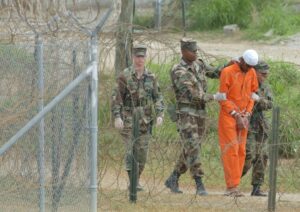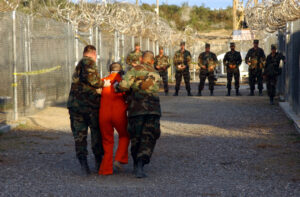Hundreds of Thousands More Like Tomas Young
Almost half of the 2.2 million troops deployed in Iraq and Afghanistan report problems on returning home, but the attention and care many receive from the Department of Defense and Veterans Affairs are not enough, a report published Tuesday finds.
Almost half of the 2.2 million troops deployed in Iraq and Afghanistan report problems on returning home, but the attention and care many receive from the Department of Defense and Veterans Affairs are not enough, a study published Tuesday finds.
The report was commissioned by Congress, funded by the Pentagon and conducted by the Institute of Medicine. Its authors expressed “serious misgivings” about methods used to treat “significant numbers” of returning soldiers with post-traumatic stress disorder, depression and drug abuse problems. It found that some tools and treatments used by the Department of Defense have “no clear scientific evidence base.”
The 500-plus page study found that 44 percent of troops returning home reported difficulties. As many as one in five suffers from PTSD. A similar number have mild traumatic brain injury (TBI). Some have overlapping conditions. The report noted that the unemployment rate among veterans aged 18-24 was more than 30 percent, compared with 16 percent for civilians.
Tomas Young, the 33-year-old veteran who was wounded in Iraq and who announced in February that he would discontinue the nourishment regimen that was keeping him alive, suffered a massive pulmonary embolism and fell into a coma one month after being released prematurely from a Veterans Affairs hospital. The injury stole “most of his upper-body mobility and short-term memory, and his speech was slurred significantly,” Chris Hedges wrote in a recent article about Young.
See some of the study’s key conclusions below.
— Posted by Alexander Reed Kelly.
Your support matters…The Guardian:
• The DOD and the VA should do more to assess the efficacy and adequacy of treatment, especially if it is to be offered nationally. The tool used to assess cognitive function after a brain injury has “no clear scientific base” and the “Acceptance and Commitment” therapy used by the VA for depression “lacks sufficient scientific evidence to support its use as a first line intervention”, it said.
• Research shows that restricting access to lethal weapons prevents suicides, but, the report found that, even if a service member is at risk for suicide, DOD policy prohibits restricting that individual’s access to privately owned weapons. In 2010, half of all the 300 military suicides were by those who had deployed in the Iraq and Afghanistan conflicts, the report said. An estimated 22 veterans take their own lives every day, according to a VA report last month.
• It recommends that the DOD and VA “expand its definition of family” to include unmarried partners, same sex couples single parents and stepfamilies.
• The DOD should make reducing domestic violence a priority, to combat the “troubling rise” in domestic violence in service members returning from deployment, “typically involving abuse of spouses or neglect of children”.
Independent journalism is under threat and overshadowed by heavily funded mainstream media.
You can help level the playing field. Become a member.
Your tax-deductible contribution keeps us digging beneath the headlines to give you thought-provoking, investigative reporting and analysis that unearths what's really happening- without compromise.
Give today to support our courageous, independent journalists.






You need to be a supporter to comment.
There are currently no responses to this article.
Be the first to respond.